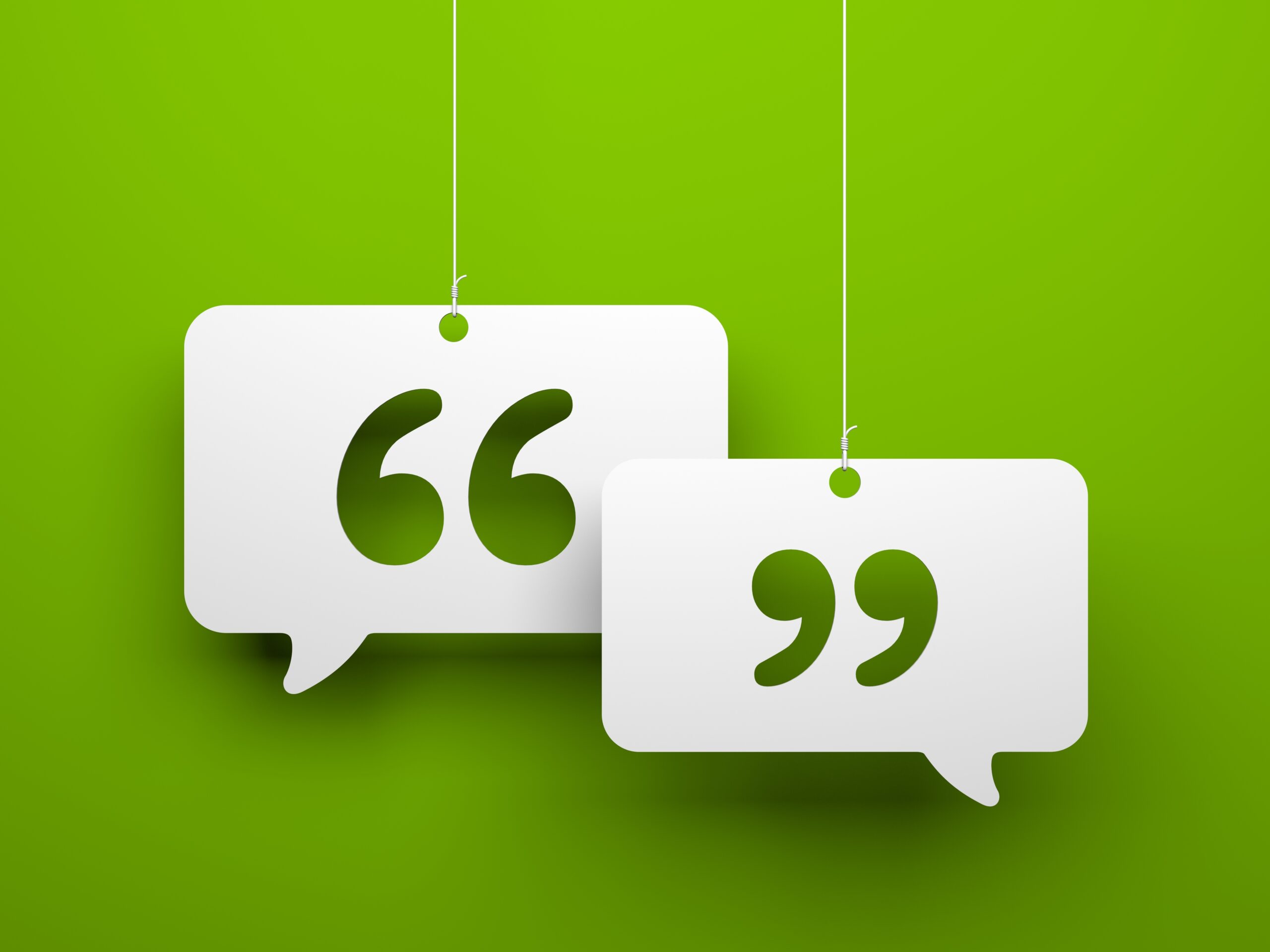In press releases, quotes are included as a standard. Quoted statements lend credibility, support key points, and make the release feel more current and newsworthy.
Press releases should include at least one quote from someone directly involved with the development or someone who can offer insight into why it’s important. A direct statement will help a press release look and feel like a trustworthy news story and boost its quality and impact.
If you’re writing a press release, but you’re not sure how to include quotes, where to get them, or how many you need, the following information will help you move forward.
How Do You Get Quotes For A Press Release?
If you’re writing a press release on behalf of your own company or to promote your brand, getting a quote should be fairly simple. Start by choosing at least one person who was integral to the news or announcement you’re making.
If you’re a key stakeholder in the development, you can craft your own statement on what happened and why it’s important. You can also reach out to team members who played a role in the news.
For example, if you’re announcing a new product launch, you may want to include a quote from the person who was in charge of its design or manufacture, or if your company made a philanthropic contribution and is publicizing the news, a statement from whoever chose the charity or organized the donation is appropriate.
Quotes can also be obtained from people outside of your organization, provided they can give insight or offer a comment on the significance of your news. For example, if your company recently partnered with a software development firm to upgrade its customer service system, you may want to ask the developer for a statement on the system’s features and why they will amount to a better customer experience.
A press release quote only needs to be one or two sentences at most. Asking a specific question related to an important point or fact is a good approach to ensure the statement is specific and relevant.
If you haven’t yet written your press release, you may want to gather quotes as part of the outline process. In addition to a statement on the topic, make sure to get the speaker’s name as well as how they’d like to be credited with regard to their qualifications. This will usually mean specifying their professional title or their role and their organization. These details will let readers know how this person is connected with the news and why their statement is credible.
If you’ve already drafted your press release, you may want to submit a brief excerpt to the person you intend to quote. You can request a related statement or their takeaway on the news.
Always get permission to use a quote and make sure the person you’re quoting is fully aware that you’ll be using their statement in a press release. Ideally, you should send them a final draft and give them a chance to review their statement and its context within the release.
Does A Press Release Always Need To Include A Quote?
A quote is not mandatory for a press release. Most press release publishers and distributors will not reject your press release because it lacks a quote.
If you’re unable to get an accurate or relevant quote from someone involved with your news, don’t let it completely prevent you from publishing.
Under no circumstances should you fabricate a quote or falsely credit someone just for the sake of including a statement. Including any inaccurate information in a press release is a major misstep and quotes are no exception.
How and Where To Add A Quote To A Press Release
Quotes should be added wherever they best support points or facts in your release.
Use more specific quotes wherever they’re most relevant. General quotes that underscore the overall meaning of the news can be used before delving into the details or at the release’s conclusion, but avoid using any quotes in the introduction.
If, for example, you’re writing about a product debut and you have a statement from the head of the R&D team regarding product testing, that quote is best used in the part of the release that explains the development behind the product. If you have a statement from the lead sales rep explaining how buyers can get custom options, that quote may be included later in the release to lead into the call-to-action.
When including a quote in a press release, always enclose the statement in quotation marks to denote the exact words of the speaker. Specify who they are as well as their qualifications outside of the quotation marks.
Simply stating “Speaker Name said” before or after the quote is sufficient. If their title or relevant professional qualifications need context, that information can be added after their name or in the very next statement.
Conventionally, a quote and speaker credit are contained in a separate paragraph. However, this is more of a guideline than a rule. An additional line of content that sets up or drives home the meaning of the statement can be included in the same paragraph, however, good quotes should speak for themselves without a lot of extra framing.
If a statement is lengthy or addresses unique points, it can be separated into multiple quotes as long as each portion is enclosed in quotation marks and the speaker is credited appropriately. If you’ve used the speaker’s full name and professional title at an earlier point in the release, you can identify the speaker again by referring to only their last name.












